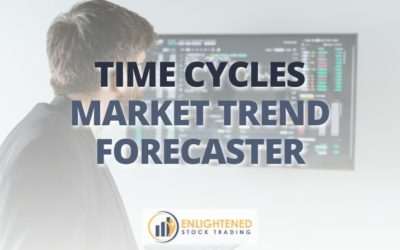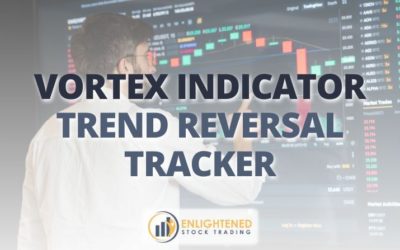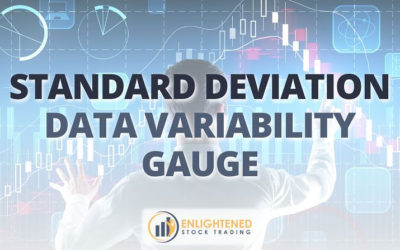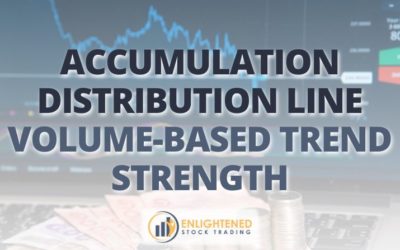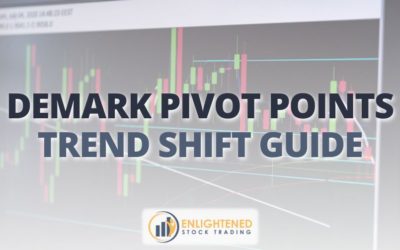After the tariff shocks that started a couple of weeks ago the markets have rallied this week, but looking at the charts below I don't see a lot of cause for long side traders to get excited. The current rally is looking weak and it has already rolled over on the S&P500. Any negative news this coming week and I would expect a rapid decline to new lows, especially in US stocks. The...
Adrian Reid

Master the Elliott Wave Indicator for Profitable Trades
The Elliott Wave trading indicator is a technical analysis tool that helps traders identify market trends by recognizing recurring price patterns in price movements. Think of it like a map that shows the twists and turns in a journey. Just like a map helps you predict your route, the Elliott Wave Indicator shows the expected market direction by identifying advances in price through five impulse...
Time Cycles in Trading: How to Identify Market Timing Patterns
Time cycles as a trading indicator refer to recurring cyclical patterns in market movements based on time durations rather than price action alone. Just as natural cycles—like seasons or lunar phases—follow a repeating pattern, financial markets also exhibit cyclical structures that traders analyze for market timing and trend reversals. Understanding these cycles is a powerful technical analysis...
How to Use the Vortex Indicator in Systematic Trading
The Vortex Indicator (VI) is a trading indicator and technical analysis tool introduced by Etienne Botes and Douglas Siepman in 2010. It is designed to detect trend patterns, confirm existing market trends, and provide insights into market trends by plotting two oscillating lines, VI+ and VI- lines, which represent positive trend movements and negative trend movements. The Vortex Indicator...
Master the Standard Deviation Indicator for Better Trades
The standard deviation trading indicator is a fundamental tool in technical analysis that measures how much price values deviate from their average closing price over a given time period. The greater the standard deviation reading, the more volatile the asset, while a lower degree of deviation suggests stability. A useful way to think about standard deviation measures is like road traffic. On a...
Stock Market Update|What does the 10th Largest % Up Day in S&P 500 History mean for the markets
Well I certainly hope you like rollercoasters, because that is exactly what the markets feel like at the moment! After the massive tariff shocks of last week, this week we had the 10th largest up move in the history of the S&P500 (close to close in percentage terms). I am not going to get into the drivers of the volatility this week because unless you are living under a rock you can't miss...
How to Trade with Heikin-Ashi Candlesticks Like a Pro
The Heikin-Ashi technique is a Japanese trading indicator that smooths out price fluctuations to provide a clearer view of current trends. Many traders struggle with reading Japanese candlestick charts because of market noise, frequent reversals, and false breakouts. This technique modifies the way colored candles are plotted to reduce noise and make trend visualization easier to follow....
Take the Trader Personality Test To Unlock Your Trading Edge
If you’ve been trading for a while but still feel like something isn’t clicking, it might not be your strategy — it might be that you are not being true to your trader personality. Our Trader Personality Test can help! Every trader approaches the markets differently. Some crave structure and data, while others rely on instinct and adaptability. But most traders never stop to understand how their...
Awesome Oscillator: A Powerful Tool for Spotting Trend Changes
The Awesome Oscillator is a market momentum trading indicator is designed to provide a clear representation of current market momentum. Traders often look for ways to measure price momentum and identify when trends are likely to continue or reverse. It was developed by Bill Williams to help technical traders compare short-term trends with longer-term periods. The indicator is displayed as a...
Accumulation/Distribution Indicator: How to Spot Smart Money Moves in the Stock Market
The Accumulation/Distribution trading indicator is a cumulative indicator that helps traders identify whether a financial asset is being accumulated (bought up) or distributed (sold off). Instead of simply tracking stock prices, it weights price trend by volume, offering deeper insight into stocks using supply and demand dynamics. Think of the accumulation and distribution line as a financial...
Envelope Indicator: A Complete Guide for Systematic Traders
The Envelope trading indicator is a technical analysis tool that helps traders define trading ranges and identify potential trend reversals in price movements. It consists of a moving average and two bands that create an upper and lower boundary around the price action. These bands are set at a fixed percentage above and below the moving average, making it a useful tool for both trend indicators...
Demark Pivot Points: A Proven Tool for Market Timing
The Demark Pivot Points trading indicator, developed by Thomas DeMark, is a unique variation of technical indicators used to identify potential market trend turning points. Unlike standard types of pivot points, which rely on previous highs, lows, and closing prices, Demark Pivot Points adjust based on the relationship between the open and close. Think of Demark Pivot Points as a GPS for price...



